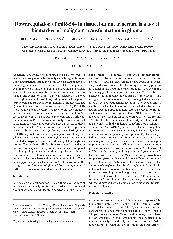摘要
Low-grade glioma is predisposed to progress to anaplastic astrocytoma and eventually secondary glioblastoma. The malignant transformation may involve the accumulation of multiple genetic alterations. The purpose of this study was to explore the role of miR-544 in glioma progression and discuss whether it may be a novel biomarker of malignant transformation. The expression of miR-544 was measured in a series of 198 glioma samples (63 low-grade glioma, 44 anaplastic astrocytoma and 91 glioblastoma tumors) using microarrays. Quantitative real-time reverse transcription PCR (qRT-PCR) was used to validate the expression levels of miR-544 in tissue and serum samples in an independent validated cohort (25 low-grade glioma, 21 anaplastic astrocytoma and 20 glioblastoma tumors). A Pearson correlation analysis was performed to examine the correlation between miR-544 levels of tissue and serum samples. Microarrays revealed that the expression levels of miR-544 decreased significantly in anaplastic gliomas (P<0.01) or glioblastoma (P<0.01) compared with low-grade gliomas. In an independent cohort of glioma patients, miR-544 exhibited a progression-associated downregulation in glioma tumors. The levels of miR-544 in scrum samples tended to be lower in anaplastic and glioblastoma patients compared with low-grade gliomas, but with no significant difference. The Pearson correlation analysis revealed a weakly positive correlation between tissue and serum levels of miR-544. These data support a significant role for miR-544 aberration in the malignant transformation of glioma. The downregulation of miR-544 in tissue may be used as a novel biomarker.
- 出版日期2012-12
- 单位首都医科大学
